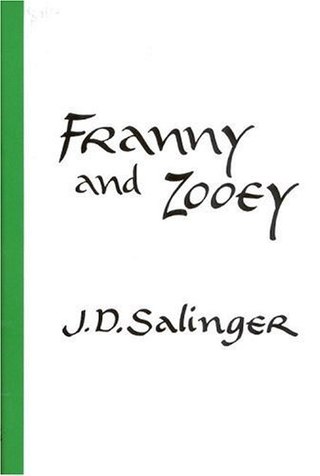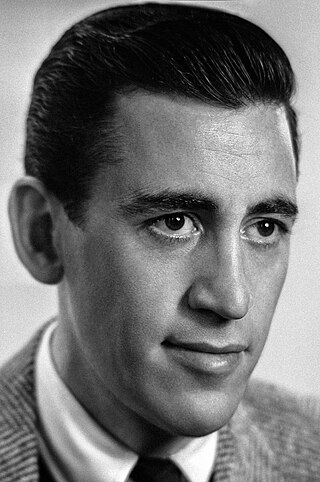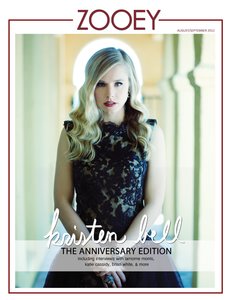Related Research Articles
"Hapworth 16, 1924" is an uncollected work of short fiction by J. D. Salinger that appeared in the June 19, 1965, issue of The New Yorker.
"A Perfect Day for Bananafish" is a short story by J. D. Salinger, originally published in the January 31, 1948, issue of The New Yorker. It was anthologized in 1949's 55 Short Stories from the New Yorker, as well as in Salinger's 1953 collection Nine Stories. The story is an enigmatic examination of a young married couple, Muriel and Seymour Glass, on vacation in Florida. It is the first of his stories to feature a member of the fictional Glass family.

Franny and Zooey is a book by American author J. D. Salinger which comprises his short story "Franny" and novella Zooey. The two works were published together as a book in 1961, having originally appeared in The New Yorker in 1955 and 1957 respectively. The book focuses on siblings Franny and Zooey, the two youngest members of the Glass family, which was a frequent focus of Salinger's writings.
The Glass family is a fictional family appearing in several of J. D. Salinger's short fictions. All but one of the Glass family stories were first published in The New Yorker. They appear in the short story collections Nine Stories, Raise High the Roof Beam, Carpenters and Seymour: An Introduction and Franny and Zooey.

Raise High the Roof Beam, Carpenters and Seymour: An Introduction is a single volume featuring two novellas by J. D. Salinger, which were previously published in The New Yorker: Raise High the Roof Beam, Carpenters (1955) and Seymour: An Introduction (1959). Little, Brown republished them in this anthology in 1963. It was the first time the novellas had appeared in book form. The book was the third best-selling novel in the United States in 1963, according to Publishers Weekly.
"Just Before the War with the Eskimos" is a short story by J. D. Salinger, originally published in the June 5, 1948 issue of The New Yorker. It was anthologized in Salinger's 1953 collection Nine Stories, and reprinted for Bantam in Manhattan: Stories from the Heart of a Great City in 1954. It is a tale of adolescent alienation and redemption in a post-World War II setting. It focuses primarily on fifteen-year-old Ginnie Mannox's meeting with her classmate Selena Graff's older brother, Franklin.
"De Daumier-Smith's Blue Period" is a short story by J. D. Salinger, first published in the May 1952 edition of World Review (London). Declined by The New Yorker on November 14, 1951, the piece was judged too short to contain the complex religious concepts that Salinger attempted to present. It is the only work he is known to have produced in 1951 after struggling with it for over five months.
"Uncle Wiggily in Connecticut" is a short story by J. D. Salinger, which appears in his collection Nine Stories. It was originally published in the March 20, 1948 issue of The New Yorker.
“Slight Rebellion off Madison” is an uncollected work of short fiction by J. D. Salinger which appeared in the 21 December, 1946 issue of The New Yorker.
"Teddy" is a short story by J. D. Salinger, completed on November 22, 1952, and originally published in the January 31, 1953, issue of The New Yorker. Under the influence of The Gospel of Sri Ramakrishna, Salinger created an engaging child character, Teddy McArdle, to introduce to his readership some of the basic concepts of Zen enlightenment and Vedanta reincarnation – a task that Salinger recognized would require overcoming some 1950s American cultural chauvinism.
“The Heart of a Broken Story” is a work of short fiction by J. D. Salinger published in the September 1941 issue of Esquire.
“The Long Debut of Lois Taggett” is an uncollected work of short fiction by J. D. Salinger which appeared in the September-October 1942 issue of Story.
“The Varioni Brothers” is an uncollected work of short fiction by J. D. Salinger which appeared in the 17 July, 1943 issue of The Saturday Evening Post.
“Soft-Boiled Sergeant” is an uncollected work of short fiction by J. D. Salinger which appeared in the 26 February, 1944 issue of The Saturday Evening Post.
“The Inverted Forest” is an uncollected work of short fiction by J. D. Salinger which appeared in the December 1947 issue of Cosmopolitan. The work was republished in Cosmopolitan's "Diamond Jubilee" issue in March 1961. The story marked the start of Salinger's focus on the poet as a distinguished creative genius, and on the impossibilities he finds when trying to adapt to society.
"This Sandwich Has No Mayonnaise" is an uncollected work of short fiction by J. D. Salinger which appeared in the October 1945 issue of Esquire. The story was published in the 1958 anthology The Armchair Esquire, edited by Arnold Gingrich and L. Rust Hills.

Jerome David Salinger was an American author best known for his 1951 novel The Catcher in the Rye. Salinger published several short stories in Story magazine in 1940, before serving in World War II. In 1948, his critically acclaimed story "A Perfect Day for Bananafish" appeared in The New Yorker, which published much of his later work.
“A Girl I Knew” is an uncollected work of short fiction by J. D. Salinger which appeared in the February 1948 issue of Good Housekeeping.
“The Children’s Echelon” is an unpublished work of short fiction by J. D. Salinger written in 1944 when the author was serving in combat during World War II. The work was referred to as both “The Children’s Echelon” and “Total War Diary” in Salinger’s professional correspondence. It can be located in the Firestone Library in Princeton University.

Zooey Magazine was a boutique quarterly United States-based women's fashion and lifestyle magazine, with an emphasis on simple living. The magazine began its printed publication in 2010, having been created in 2008 by the then 14-year-old Lucia Tran. It folded in 2015.
References
- ↑ Salinger, J.D. (April 1949). "Down at the Dinghy". The Harper's Monthly. New York: Harper's Magazine Foundation.
- ↑ Salinger, J.D. Nine Stories. Boston: Little, Brown and Company.1953.
- ↑ Slawenski, 2010, p. 174
- ↑ Slawenski, 2010, p. 173
- ↑ Slawenski, 2010, p. 173-174
- ↑ Slawenski, 2010, p. 176
- ↑ Slawenski, 2010, p. 174 - 175
- ↑ Slawenski, 2010, p. 174
- ↑ Salinger, 1949, p. 86
- ↑ Slawenski, 2010, p. 174
- ↑ Slawenski, 2010, p. 176
- ↑ Slawenski, 2010, p. 172
- ↑ Slawenski, 2010, p. 172
- ↑ Slawenski, 2010, p. 174
- ↑ Slawenski, 2010, p. 175-176
- ↑ Slawenski, 2010, p. 174
- ↑ Slawenski, 2010, p. 161, p. 173, p. 176
- ↑ Slawenski, 2010, p. 176
- ↑ Slawenski, 2010, p. 176